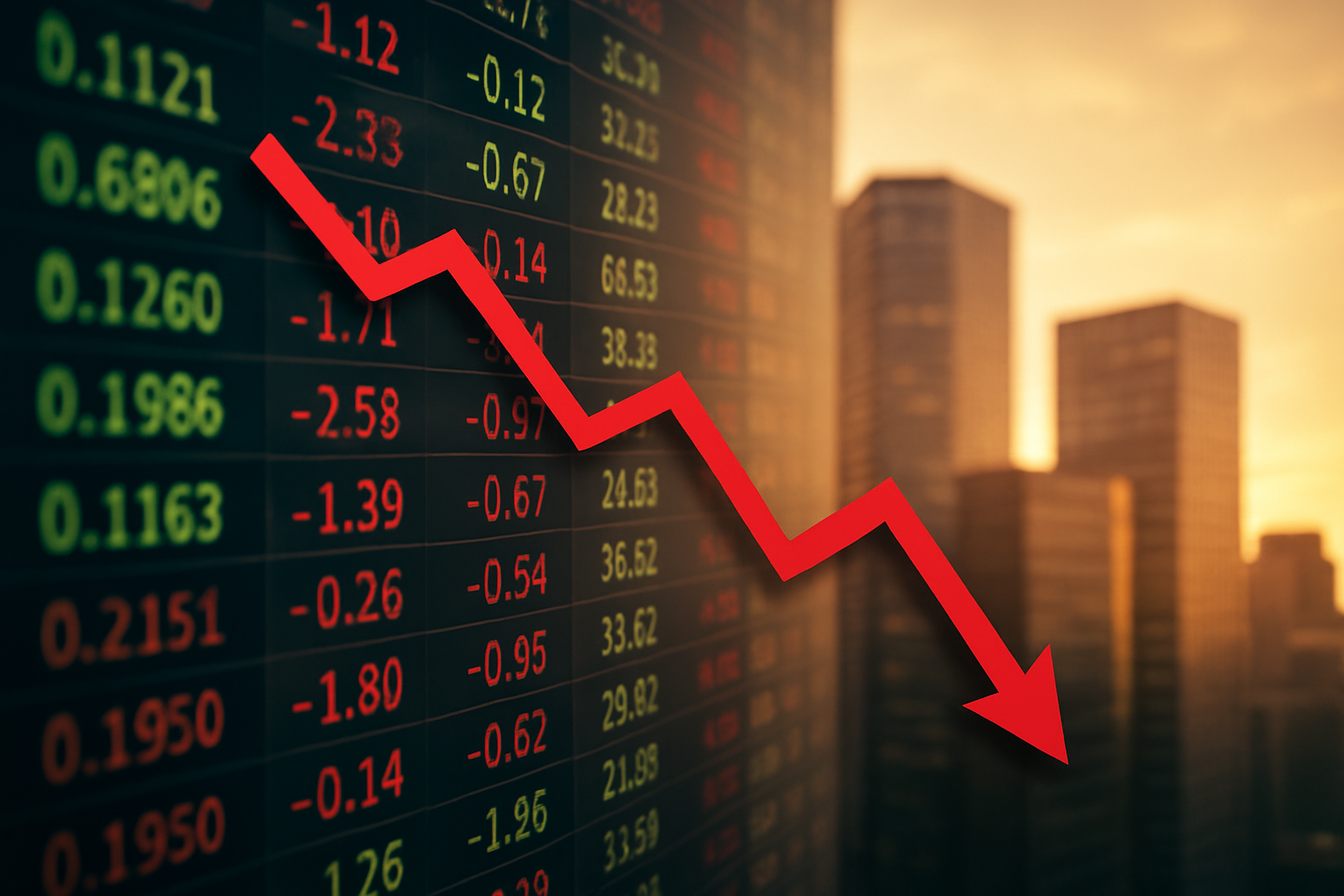Investors woke to a market narrative that sharply diverges from the optimism seen just weeks ago. U.S. stock futures slipped across the board — with the S&P 500, Dow Jones Industrial Average, and Nasdaq Composite all in negative territory — after a wave of hawkish Federal Reserve commentary dampened expectations for a December rate cut. Combined with fresh concerns about stretched tech valuations, the shift has triggered a notable recalibration of investor sentiment at a fragile moment for risk assets.
According to reporting from Reuters, Fed officials remain concerned about inflation progress slowing, making any near-term easing less likely. The market, which had priced in the beginning of a 2025 dovish pivot, is now reassessing whether valuations — especially in megacap tech — can hold under a scenario of higher-for-longer interest rates.
A Market Suddenly Confronting Reality
The reversal in futures reflects a broader tension that has been building beneath the surface. Despite strong year-to-date gains across the Nasdaq and S&P 500, investors have increasingly questioned whether earnings can justify the premium multiples seen across tech and growth sectors.
Hawkish remarks from key Fed policymakers underscored this concern. Several officials emphasized that inflation progress remains uneven and warned that premature easing could reignite price pressures — a message that contrasts sharply with market expectations fueled by October’s softer CPI readings.
Bloomberg analysts noted last week that nearly 70% of Nasdaq 100 components were trading above their 5-year median forward earnings multiples, highlighting how exposed the index is to any macroeconomic disappointment. In effect, the market has been priced for perfection — and the Fed has just reminded investors that perfection is rare.
Why This Matters for Investors
1. Growth Stocks Are Losing the Safety Net
For most of the year, investors have operated under the assumption that the Fed would eventually turn more accommodative, supporting risk assets. But with the December cut now unlikely, growth-heavy sectors may face pressure:
- Higher rates increase discount rates applied to future earnings — a particular headwind for tech.
- Overvalued segments face sharper corrections during policy tightening cycles.
- Market leadership may shift from megacap growth to value, cyclicals, or defensive plays.
For investors overweight in high-beta names, especially unprofitable tech, this recalibration is a pivotal moment.
2. Market Breadth Remains a Growing Concern
Despite headline index gains, breadth has remained historically narrow, with a small set of AI-related megacaps driving a disproportionate share of returns. If these leaders come under pressure, the indices may underperform relative to historical norms.
Goldman Sachs recently highlighted that the top 10 S&P 500 companies now account for nearly 35% of the index’s total market cap, the highest concentration in history.
A pullback in this group has outsized implications.
3. Inflation and Labor Data Regain Importance
With the Fed not offering the dovish relief markets hoped for, investors must return their focus to the fundamentals:
- Core PCE data
- Labor market softness or resilience
- Corporate cost guidance
- Energy and commodity price volatility
Any data suggesting sticky inflation could further delay rate cuts, amplifying market uncertainty.
Tech’s Vulnerability Comes Into Focus
The most notable pullback this morning came from tech futures, particularly those tied to the Nasdaq 100. Analysts from Morgan Stanley and J.P. Morgan have repeatedly warned that AI enthusiasm, while justified from a long-term perspective, has left valuations detached from near-term cash flows.
Companies tied to cloud computing, semiconductor production, and AI infrastructure may continue delivering strong revenue growth, but their stock prices already reflect years of future expansion.
Today’s slide demonstrates a shift: markets are no longer rewarding “growth at any cost” — cash flow discipline is back in demand.
Future Trends to Watch
Fed Communication Will Drive Volatility
With rate expectations shifting almost weekly, investor sentiment is highly sensitive to Fed speeches, minutes, and economic projections.
Rotation Toward Value & Income Stocks
If rates remain elevated, sectors such as financials, industrials, and utilities may see renewed interest — especially given stronger balance sheets and more predictable cash flows.
Earnings Quality Will Matter More Than Guidance
Investors will increasingly scrutinize free cash flow, operating margins, and debt servicing costs in a higher-rate environment.
Tech’s Leadership May Be Challenged
While long-term AI and cloud trends remain intact, the short-term macro landscape may favor more defensive or value-driven segments.
Key Investment Insight
Today’s futures decline signals a critical moment: markets are transitioning from liquidity-driven optimism to earnings-driven realism. Investors who adapted early — by reducing high-beta exposure, diversifying into value, and focusing on cash-flow strength — are better positioned for the months ahead.
For those still heavily concentrated in growth and tech, this environment calls for a deeper review of portfolio risk and valuation assumptions.
Stay ahead of market-moving developments every day with MoneyNews.Today, your trusted source for real-time investor insights and analysis.





